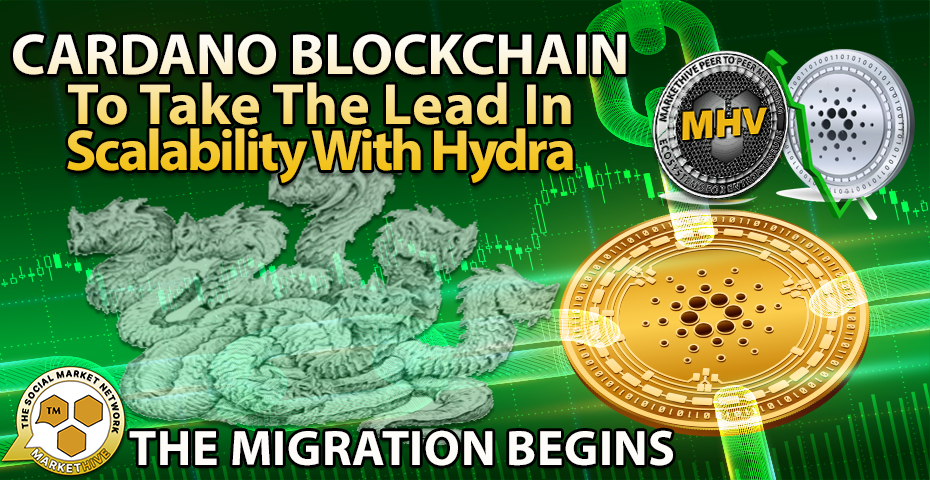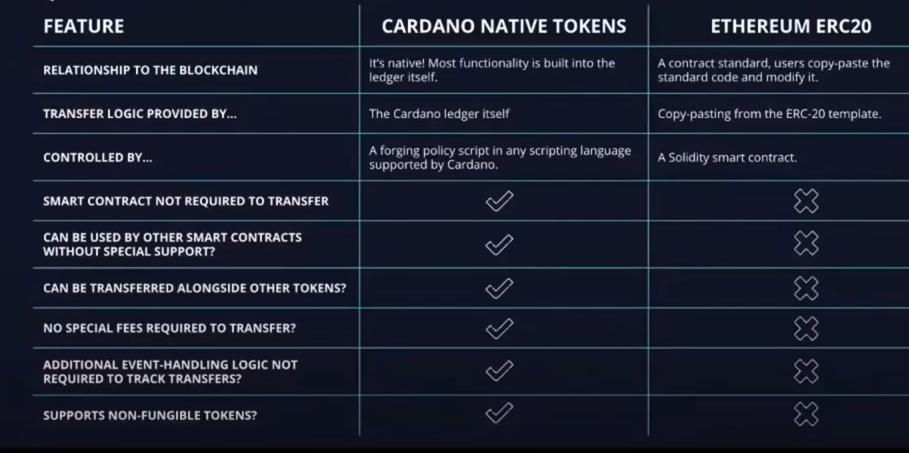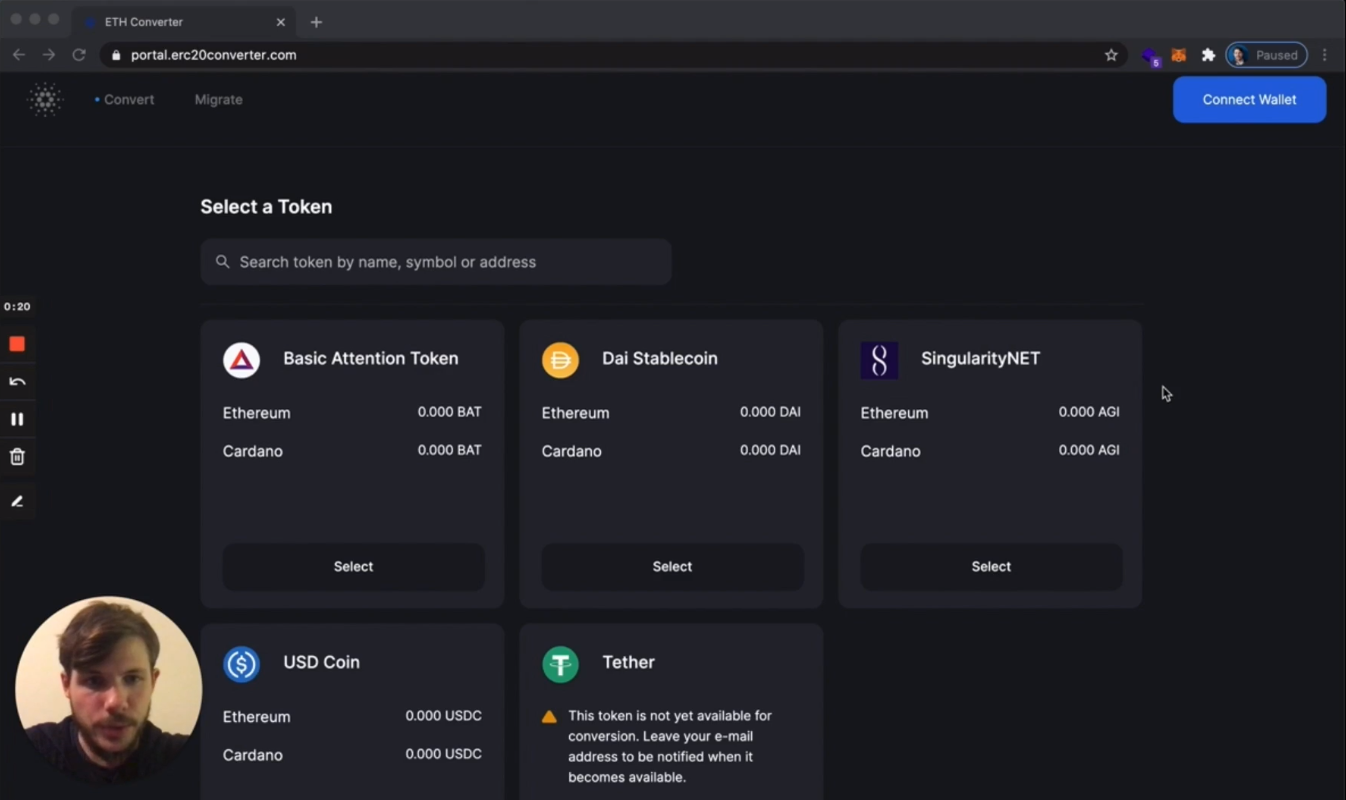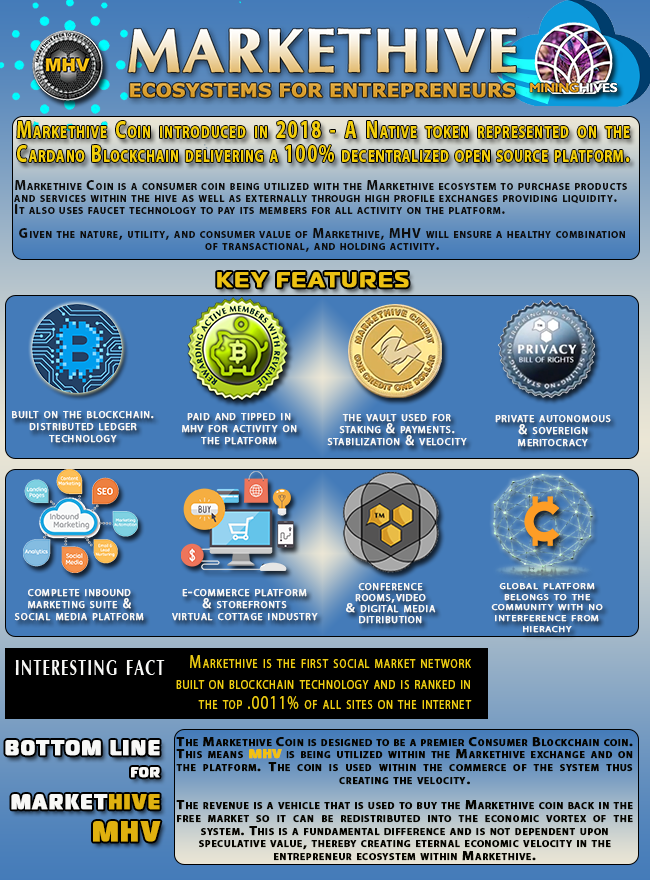


As a follow-up to my last two articles explaining, Cardano is a 3rd generation blockchain that started as a project in 2015 and launched in 2017, focusing on three elements. Cardano has made great strides since then. The team’s aspirations are now coming to fruition in 2021, solving some critical problems, one being scalability, which has become very apparent with the 1st generation, Bitcoin, and 2nd generation blockchain, Ethereum, in the last five years.
Cardano’s key features are the academic and scientific philosophy behind it. The team consisting of engineers, mathematicians, scientists, and business professionals has published over 90 whitepapers for the technology. With a well-defined roadmap, the Cardano network is known for its ingrained security, scalability, and interoperability.
Previous generation blockchains suffer from bottlenecks that essentially limit the amount of throughput they can handle. Proof of this can be seen in the fluctuating BTC and ETH transaction times over the years, making them an inefficient choice for global-scale mass use.
When the Cardano blockchain was first tested in 2017, it could process around 257 transactions per second (TPS). To put that into perspective, today, Bitcoin can only process 7 TPS and Ethereum a little higher at 25 TPS.
Cardano is built and a comparison to VISA as a competitor and a theoretical goalpost. Currently, VISA’s transactions per second are approximately 2,000 TPS which is unreachable in the blockchain world. Particularly with Proof of Work protocols that can only reach into the tens. Proof of Stake (POS) networks can deliver a few hundred. However, with the introduction of Cardano’s Ouroboros Hydra solution, it is now looking at more than 1 million TPS.
With this new groundbreaking technology in PoS scalability, the Hydra, the Cardano blockchain can become a real alternative to current fiat currency and payment systems for their Native ADA token and other altcoins and ecosystems with all the necessary building blocks to be a potent fintech disruptor.

The body of Hydra is like the mainchain. Hydra can have more heads. Every head can process 1,000 TPS.
Founder of Cardano, Charles Hoskinson, explained in the video below recorded in March 2020 that Hydra is a Layer 2 scaling solution implemented over Cardano's Proof of Stake protocol while fitting "very well with the Pool staking model.” It implements state channels that enable the fast processing of payments and smart contracts beyond the blockchain (off-chain).
Simulations have shown that each "Hydra head" can currently process about 1,000 transactions per second (TPS). With 1,000 stacking pools, each of which processes 1,000 TPS, Cardano could achieve a throughput of up to one million transactions per second.
Hoskinson further emphasized that each "Hydra head" will reach the so-called "Fast Finality,” which means that the irreversibility of a transaction can be done almost in real-time, as commonly used in a Byzantine Fault Tolerance (BFT) protocol. Thanks to the "Fast Finality" and the high transaction speed, even micro-transactions will become possible.
Hoskinson also said.
“A serious disadvantage present in current layer-two state channel protocols is that existing layer-one smart contract infrastructure and contract code cannot be reused off-chain without change. In this paper, we introduce Hydra, an isomorphic multi-party state channel. Hydra simplifies off-chain protocol and contract development by directly adopting the layer-one smart contract system. We present the onchain contracts to open and close Hydra heads (our isomorphic state channels) and a novel off-chain protocol for the fast evolution of heads.”
Put more simply, data from the blockchain is loaded into Hydra, and participants can make transactions or run smart contracts in the Hydra. Once their job is finished, they close the Hydra, and the final state is updated in the blockchain. As multiple hydra ‘heads’ can be created, it allows fast and cheap parallel processing.
Hydra will enable high scalability, which is imperative for greater adoption of cryptocurrencies, not just for faster transactions; Hydra can also execute smart contracts so developers can easily build Dapps and utilize micropayments, voting, among other things. Hydra will ensure low latency and minimal storage of data per node.
For a more in-depth look at Cardano’s solution to scalability and Hydra, read this blog by cardanians.io
Cardano’s PoS consensus mechanism, called Ouroboros, also reduces energy cost compared to PoW. It also provides provable security guarantees with transactions and seamless execution of smart contracts with Hydra’s Extended-UTxO model.
With the current setup of Ethereum (PoW) and Cardano (PoS), Cardano appears much more robust than Ethereum in terms of TPS. Ethereum also lags due to its problems with expensive gas fees when it comes to transaction costs.
The recent bull runs resulted in ETH and other Ethereum blockchain tokens experiencing extremely high gas (transaction) fees due to network congestion, therefore discouraging retail investors from being involved.

Comparison Chart between Cardano Native Tokens and Ethereum ERC-20
The Goguen Era, just one of the many phases of the Cardano roadmap, is set to launch in March 2021 allows more comprehensive interoperability with existing smart contracts, regardless of the different coding language used to develop them initially. Goguen enables smart contracts to be written in different languages, whereas Ethereum smart contracts use Solidity only.
Cardano also applied the Goguen native token upgrade, known as the Mary upgrade, to Cardano’s testnet, which transforms the blockchain into a multi-asset network similar to Ethereum. Still, design differences set it apart, which opens up various and differing business use-cases with high-scale enterprises.
With the well-thought-out and tested infrastructure, Cardano is poised to capture a diverse and completely different market share than Ethereum; areas such as national-level identity solutions, back-end financial infrastructure, and robust enterprise use cases like decentralized social media.
A significant difference is that there are no execution fees charged to the user in conjunction with a token smart contract on Ethereum. (Gas fees)
Smart contracts on Ethereum are also vulnerable to human error, fraud, and other risks associated with Ethereum design protocols that require conversion between the two layers. The two layers’ scripting language is significantly different, and Solidity cannot work with the second layer, so conversion is necessary.
Native Tokens on Cardano are forged on-chain with both layers using the same scripting system, so no conversion is needed. The opportunity to siphon funds through a smart contract is eliminated.
Hinrich Pfeifer of the Cardano Foundation said,
“User-defined native tokens on Cardano use the same underlying token logic as the Cardano blockchain itself. Cardano’s scripting language does not have fixed-size integers, and the ledger itself tracks token movements and handles the token logic.”
In other words, according to Charles Hoskinson, organizations with cryptocurrency assets are treated as first-class citizens; they are treated the same way as Cardano treats ADA, their own crypto, whereas, in Ethereum, you’re a second-class citizen. ETHER is treated differently from smart contacts.
This first-class citizen approach means your assets will have the same governance access, layer two portfolio access, and the same infrastructure that ADA itself has. Also, more effortless listing experiences, more comfortable wallet experience, better user experience, faster transactions, lower transaction costs, and the list goes on.

Vukašin Vukoje, demonstrating the ERC-20 converter, showing options for converting BAT, DAI, AGI, USDC, and USDT.Source: Cardano Development October 2020 Update
Cardano’s ERC-20 converter’s introduction facilitates the transfer of tokens from the Ethereum network to the Cardano network, which encourages ERC-20 projects to port over to Cardano. In October of 2020, on the Cardano Development Show, the broadcast included the ERC-20 converter demonstrating the conversion of stablecoins DAI, USDC, and USDT, along with AGI and BAT.
Artificial Intelligence firm SingularityNET with its AGI token, announced it is moving to Cardano. Previously, SingularityNET operated exclusively on the Ethereum blockchain. Reportedly, many have taken the news as a significant blow for Ethereum stakeholders.
The next tech social media, marketing, and broadcasting giant, Markethive, has also moved to the Cardano blockchain from Ethereum. The Markethive Coin, MHV, about to be launched on principled exchanges, is now a Native token on Cardano’s isomorphic multiparty state system instead of an ERC-20.
Given the enormous transaction activity and data involved, along with the ILP assets in Markethive, it makes perfect sense to migrate to a completely decentralized system that will handle throughput, stability, and interoperability with ease.
CEO and Founder of Markethive, Thomas Prendergast, says,
“The MHV coin was originally produced (8,888,888,888) according to the ERC20 guidelines from Ethereum about 1.5 years ago. The coin in Markethive has been kept in Markethive operating separate from the ERC20 on our own paper blockchain until we released the wallet. Recent trends have revealed the ERC20’s security risks, privacy risks, and even worse, the cost to transact (gas) has skyrocketed.
As we determined that the ERC20 was not for us and before we opened up to the exchanges as an ERC20, we decided to find other options. This was several months ago, and at the same time, our friend Charles Hoskinson the founder of Cardano released his final version from BETA, and perfect timing for us.
After contacting him, CTO of Markethive, Douglas Yates, determined that to convert to Cardano was the perfect decision, and so this now opens the door for us to launch onto the exchanges as a Cardano-based Markethive coin.”
This is excellent news for Markethive; It means much smaller transaction fees, greater security, faster application speeds. It means our entire system will be stronger, quicker, and secure.

The terms 'coin' and 'token' are often used in the crypto world. Sometimes, these terms are interchangeable, sometimes not. A 'token' can also be a type of umbrella term that encompasses all digital assets.
It is worth noting that Cardano's approach to tokenization is as unique as the ledger itself, so here's some terminology to help understand Cardano’s native tokens framework.
In Goguen/Cardano:
Ethereum requires custom code for user-defined tokens to be supported on the chain. It adds a layer of complexity, cost (gas is needed to pay for the execution of the code), and inefficiency since token code for both standards is replicated and adapted, rather than part of the system itself.
This is an inherent weakness of the Ethereum chain because it leaves room for human error. Custom code, if done carelessly, can introduce bugs that could potentially lead to significant financial loss. In one particularly infamous incident, software bugs led to the loss of ether worth $300m. The Cardano approach aims to prevent such catastrophic errors.
Cardano supports user-defined tokens natively, without the need for custom code, through the native tokens framework. Native tokens is an accounting system defined as part of the cryptocurrency ledger and enables tokens to be transacted with (tracked, sent, and received.) This eliminates the need to use custom code or costly smart contracts. In short, native tokens remove the unnecessary layer of expensive complexity and inherent inefficiency found in the Ethereum chain.
The Creator and CEO of Cardano, Charles Hoskinson, is passionate about his work and mission to change the world’s financial system. To build a true financial operating system for the planet; for the unbanked, giving open, fair, and free economic identity to those lacking, along with dozens of companies and millions of community members.
In a recent video update, Charles stated,
“We are on a path to Destiny. Everything we do is lining up to take us to that particular reality. Those are the billions of users that not only will enrich the network and make it something worthwhile but will change the entire fabric of how the world works and make it fairer, more just, and more transparent. Every bit of commercial progress we make as a company, as a protocol, as a community towards that end, makes me incredibly happy.”
It has been a gradual process for Cardano because they do real science, write real protocols, perpetually testing every aspect of this unique project. This protocol is necessary to avoid the traps many Silicon Valley startups, and the like have experienced. Move fast, break things and burden the world with their costly mistakes. Many have fundamental and architectural issues that have caused their demise or non-event.
Because of all the hard work, philosophical and scientific approach, Cardano’s progress has expedited and now a force and on track, having built the best Proof of Stake protocol with a brilliant path to evolve that protocol to keep up with emerging technology.
Charles Hoskinson and the Cardano team are one of integrity, empathy, and compassion with a philosophy that is congruent with Markethive. We, at Markethive, welcome Cardano and are excited to be collaborating and joining forces to help make the world a better place. One of freedom and sovereignty in the social media and financial spheres creating an all-encompassing ecosystem for humanity.

Written by Deb Williams
Chief Editor and writer for Markethive.com, the social, market, broadcasting network. An avid supporter of blockchain technology and cryptocurrency. I thrive on progress and champion freedom of speech and sovereignty. I embrace "Change" with a passion, and my purpose in life is to enlighten people en masse, accept and move forward with enthusiasm.
